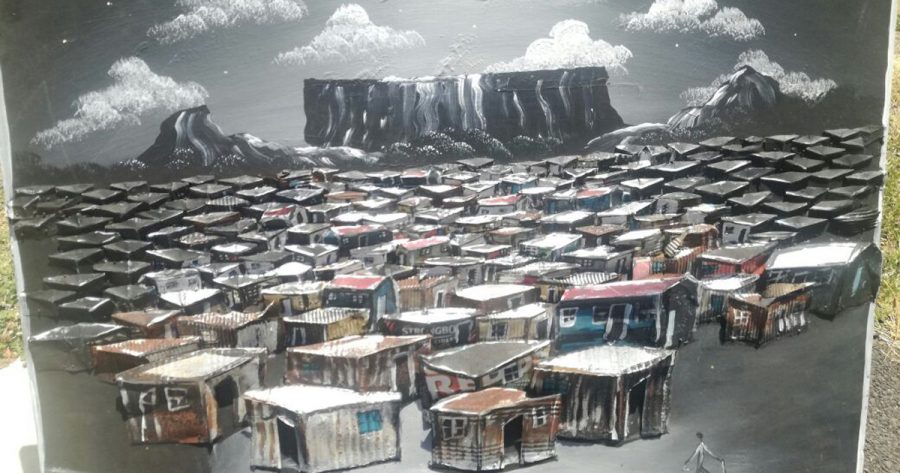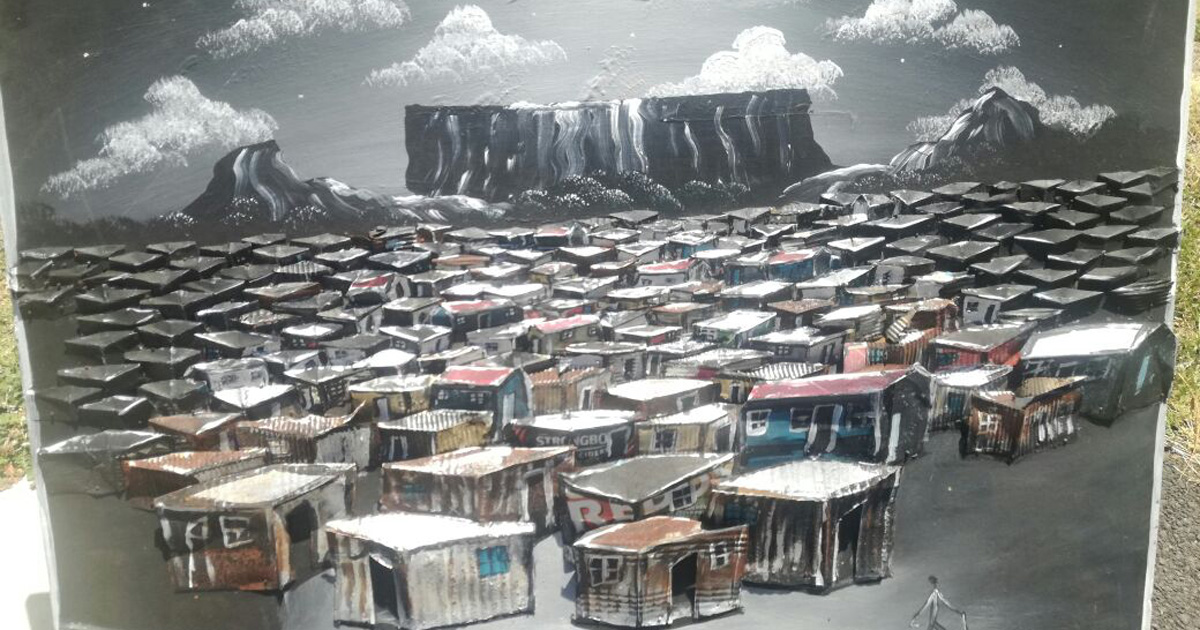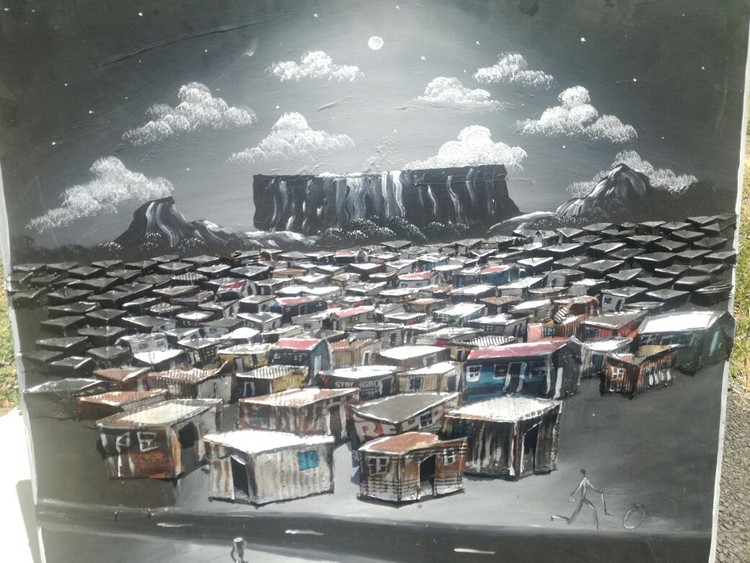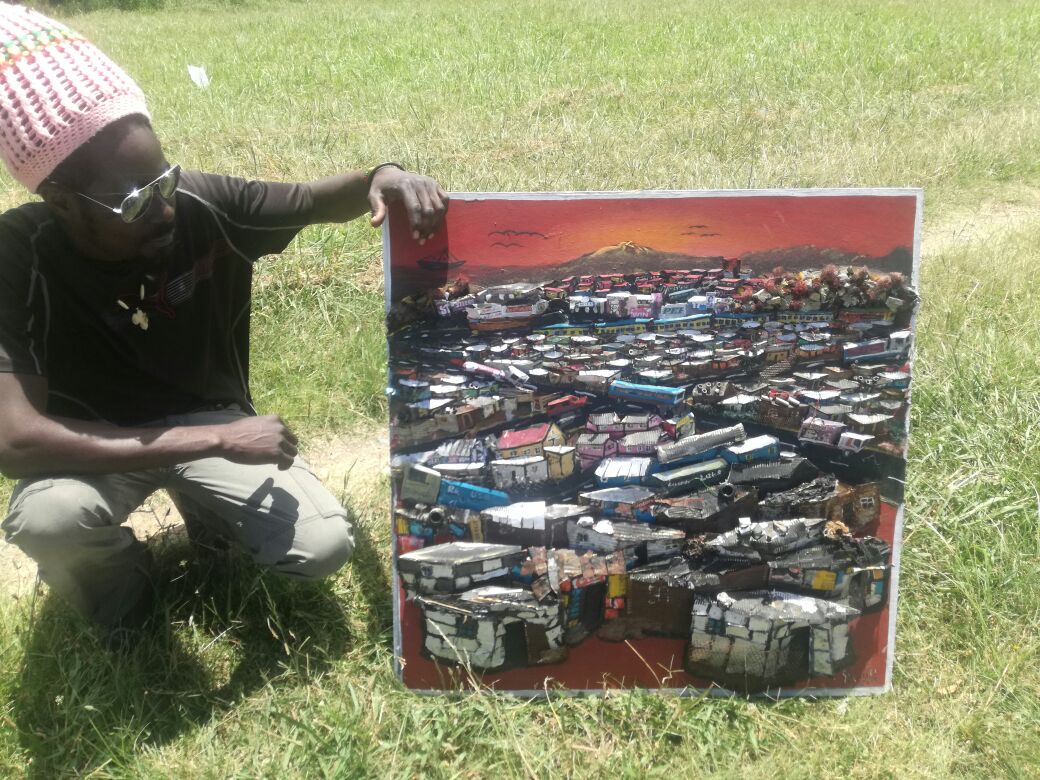
Roadside Artist Uses Tins To Show Life in Informal Settlements in South Africa
Soft-spoken 30-year-old William Mayere from Zimbabwe sells his colourful 3D paintings on Vincent Road in East London. I love using my hands, says William Mayere… Mayere lies under the tree to shelter from the sun, jumping up when a car stops next to his paintings. He has been in South Africa for eight years. He […]

Soft-spoken 30-year-old William Mayere from Zimbabwe sells his colourful 3D paintings on Vincent Road in East London. I love using my hands, says William Mayere…

Mayere lies under the tree to shelter from the sun, jumping up when a car stops next to his paintings.
He has been in South Africa for eight years. He came to East London following his two brothers who were already here. The three of them share a room in Southernwood.
When Mayere arrived, his brothers were selling headboards and chairs made out of bamboo which they cut in the bush. He joined them and worked on this until four years ago when a friend from Zimbabwe taught him how to make these paintings.
“He stays in Cape Town and I went there because I wanted to sell something different, not the chairs and headboards that people can find on every corner,” said Mayere.
He has to support a child and parents back home in Harare.
“In a busy month we can make about R6,000 which we share. In a really good month like December, when people come for holidays, we could make more,” he said
His younger brother Shoni Mayere sometimes helps with the paintings.

Mayere collects soft drink cans and other materials such as wire and cardboard to use in his paintings which he says are inspired by the way of life in informal settlements.
“I have never stayed in Duncan Village but the way people stay in those interests me and most of my paintings are of such areas,” said Mayere.
He showed GroundUp two of his favourite paintings which he says shows to what lengths people in informal settlements must go in order to live. In one painting he used wires to show the problem of illegal electricity connections and the risk of fire.
“No matter where you go these areas are always impacted by fire. People lose all their belongings, things that they worked hard for.”
“And these are poor people,” said Mayere.
Another painting shows the divide between the rich and the poor. It shows an informal settlement and a suburban area divided by railway lines.
All the paintings use cans and paint to show the overcrowding in informal settlements and the way in which structures are built.
“I can support my child and that makes me happy”
It takes Mayere two days to finish one painting which he sells from R500 to R2,000 depending on the size. While he is busy painting his younger brother sells the works.
While GroundUp was talking to him, several motorists stopped to admire the paintings with the promise of coming back to purchase. Others placed orders for work they wanted Mayere to do for them.
“I am happy to do this because I love using my hands. It is better than just sitting at home. People are struggling to find jobs out here.”
“I can support my child and that makes me happy,” said Mayere.
Published originally on GroundUp.
